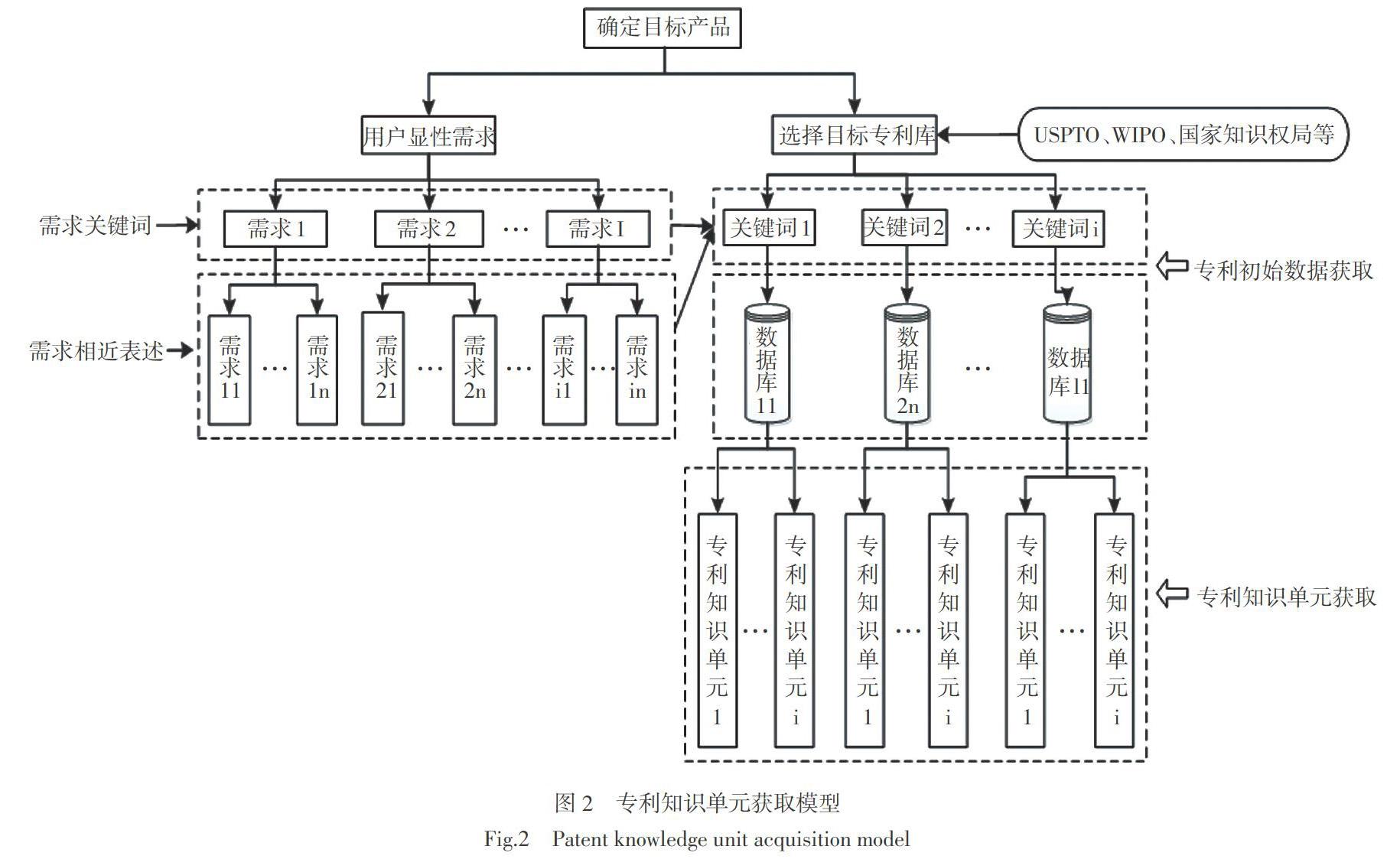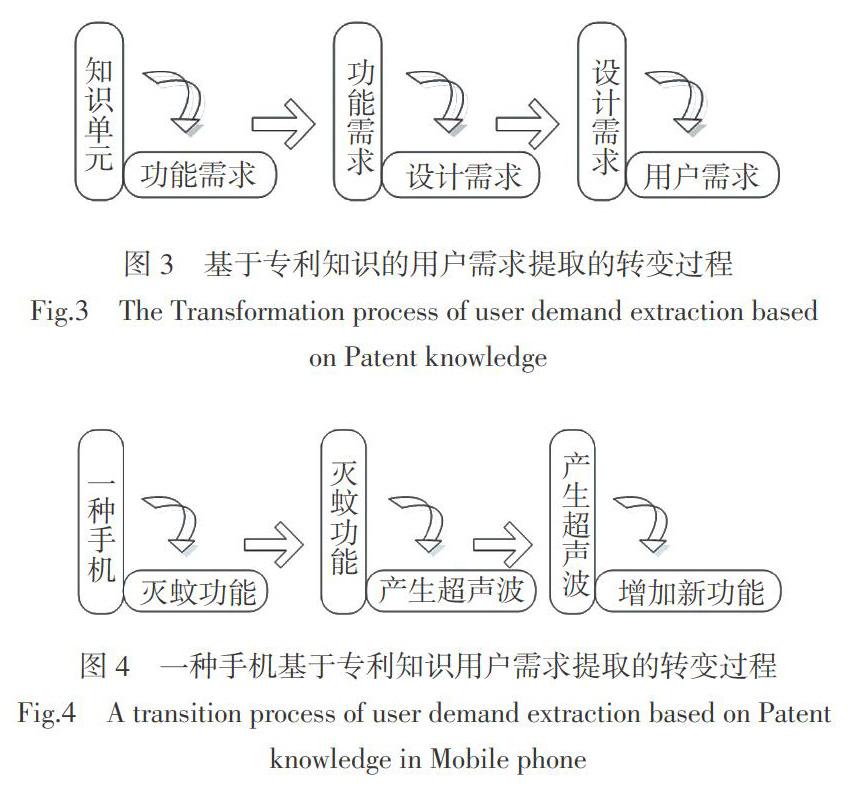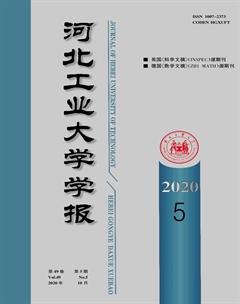TMEM16A通道结构、功能与药物靶点
安海龙 史赛 庞春丽 陈娅斐 郭帅 纪秋爽 展永



摘要 TMEM16A(也称ANO1)是钙激活氯离子电流(CaCCs)的分子基础。研究表明,TMEM16A参与调节卵母细胞的受精、气道和外分泌腺分泌、嗅觉和感觉信号的传导、平滑肌的收缩以及心脏细胞的兴奋。TMEM16A的功能障碍或表达异常与多种疾病的发生发展有关,包括胃肠道功能障碍、神经性疼痛和多种癌症。本文综述了本课题组和其他课题组对TMEM16A通道的研究进展,主要聚焦于TMEM16A通道的结构和功能,TMEM16A通道的生理、病理功能及以该通道作为靶点的药物发现。最终讨论了TMEM16A药理调节剂可能的药理作用方案。TMEM16A的结构和相关疾病的知识将对TMEM16A调节剂药物的发现和应用产生积极影响。
关 键 词 离子通道;TMEM16A/CaCCs;结构; 功能;药物靶标
中图分类号 Q6-3 文献标志码 A
Abstract TMEM16A (also known as anoctamin 1, ANO1) is the molecular basis of the calcium-activated chloride channels (CaCCs). Studies have shown that TMEM16A is involved in regulating fertilization of oocytes, transport of matter across cell membranes, transduction of olfactory and sensory signals, contraction of smooth muscle, and excitement of heart cells. The dysfunction or aberrant expression of TMEM16A is associated with the development of various diseases including gastrointestinal motility disorders neuropathic pain and various cancers. The article reviews the research progress of the TMEM16A channel of our research group and other groups, focusing on the structure and function of the TMEM16A channel, (patho)physiological function and drug discovery using this channel as target. Finally, the scheme of possible pharmacological effects of TMEM16A pharmacological modulators were discussed. Understanding well the structure and related diseases of TMEM16A will have a positive impact on the discovery and application of TMEM16A modulator drugs.
Key words ion channel; TMEM16A/CaCCs; structure; function; drug target
0 引言
钙激活的氯离子通道(Calcium-activated Chloride Channels, CaCCs)是阴离子选择性通道[1-2]。该通道存在于大多数生理组织中,其可以由胞内钙库释放的Ca2+或者由胞外流入的Ca2+激活[3-4]。30多年来,人们一直没能鉴定CaCCs的分子基础,这阻碍了对该通道的进一步研究。2008年,世界上3个独立的研究小组发现,在体外和体内实验中沉默TMEM16A基因可导致内源性CaCCs活性抑制。另一方面,外源表达的TMEM16A通道蛋白具有CaCCs的电生理特性。因此,他们得出一致的结论:TMEM16A是CaCCs的分子基础[5-7],后来人们发现TMEM16B也具有CaCCs的特性[8]。
TMEM16A属于TMEM16家族的一员,在脊椎动物中,该家族共有10个成员,它们具有较高的序列保守性[9]。其中,TMEM16A和TMEM16B属于钙激活氯离子通道。TMEM16C,TMEM16D,TMEM16E,TMEM16F,TMEM16G和TMEM16J为Ca2+依赖性脂质爬行酶。TMEM16H,TMEM16J和TMEM16K在细胞膜上表达很少,大部分保留在细胞质中。TMEM16F可同时作为脂质爬行酶和非特异性离子通道[10]。除此之外,在血球菌和烟曲霉中也分别发现了脂质爬行酶nhTMEM16和afTMEM16[11-12]。
TMEM16A具有典型的CaCCs特性,包括Ca2+和电压依赖性激活以及阴离子选择性。值得注意的是,TMEM16A的序列具有至少4个可变剪接的外显子(分别命名为a, b, c和d),产生的蛋白质具有712至1 006个氨基酸[5]。最近的研究发现,除钙离子,电压和阴离子调节外,TMEM16A还受磷脂酰肌醇4,5-二磷酸[PI(4,5)P2]调节[13-15]。
目前,在上皮细胞,神经元细胞,平滑肌细胞,血管内皮细胞和心肌细胞中均鉴定出TMEM16A的存在[3,16-21]。它在各种组织中的广泛分布表明其具备生理功能的多樣性[22]。研究表明,TMEM16A参与调节卵母细胞的受精,气道和外分泌腺分泌,嗅觉和感觉信号的转导,平滑肌的收缩以及心脏细胞的兴奋等生理过程[19,23-30]。除了在正常的生理功能中发挥作用外,TMEM16A通道的突变或功能异常与众多疾病的发生和发展有关,例如:胃肠功能障碍,神经性疼痛以及诸多癌症[31]。鉴于TMEM16A通道与众多疾病之间的关系,它正日益成为治疗上述疾病的药物的潜在靶点。
为了发现TMEM16A特异性调节剂并开发有效的靶向药物,当前迫切需要了解TMEM16A与众多疾病的关系,以及TMEM16A与药物的相互作用关系。作为众多疾病潜在药物靶标,TMEM16A结构的发现为基于结构的药物设计和筛选提供了关键的靶点结构信息。在这里首先介绍TMEM16A通道的结构与门控机制,以及TMEM16A与众多疾病的关系,最终总结TMEM16A调节剂的药理功能以及部分调节剂的分子机制。本文试图为TMEM16A的靶向调节剂的研发提供思路,并希望在基于结构的药物发现方面为读者提供全面的了解。
1 TMEM16A的结构
1.1 TMEM16A通道的结构特征
2017年5月,分辨率为6.6 ×10-10m的小鼠的mTMEM16A结构(PDB ID:5NL2)[32]获得解析。人们首次认识了TMEM16A通道的分子架构。该蛋白是一个同源二聚体,每个亚基包含2个Ca2+结合位点和10个跨膜螺旋(如图1)。在细胞外,连接α螺旋的α1-α2,α5-α6和α9-α10的氨基酸形成环状的折叠结构域。N-末端与C-末端均位于膜的细胞质侧。该结构与2014年获得的真菌的nhTMEM16[12]最大的区别在于“亚单位腔”跨膜螺旋的排布方式。在mTMEM16A中,跨膜区的亚单位腔是密封的,可防止脂质进入并仅允许离子渗透。在nhTMEM16的结构中,亚基腔是一个亲水的跨膜凹槽。这体现了TMEM16家族中脂质爬行酶和离子通道之间的结构性差异。
2017年12月,研究人员得到了4个处于不同状态的高分辨率mTMEM16A结构,包括双Ca2+结合态(PDB ID:5OYB, 6BGI),单Ca2+结合态(PDB ID:6BGJ)和Ca2+游离态(PDB ID:5OYG)[33-34]。其中,5OYB是迄今为止解析最全,分辨率最高的TMEM16A结构。Cyro-EM结构显示,带负电荷的5个残基E654,E702,E705,E734和D738共同形成了TMEM16A的Ca2+结合位点,该位点可以结合2个钙离子(如图1)。这些残基分布在跨膜螺旋α6-α8中。除上述5个关键酸性残基外,研究还发现N650,N651和N730突变为丙氨酸会降低Ca2+的亲和力,这表明这3个残基对钙离子的结合也是有帮助的。肖庆桓教授课题组和我们课题组在第1个细胞内环中鉴定了一段对Ca2+和电压敏感性都很重要的区域(EEEEEAVK)[35-37]。但是尚不清楚该区域如何调控通道的钙依赖性门控,其详细的分子机制值得进一步研究。
TMEM16A结构中的亚基腔部位是介导离子渗透的离子传导孔。跨膜螺旋α3-α7在周围排布,形成如沙漏一样的封闭通道。通过诱变和电生理实验发现,孔道中的残基有的与离子渗透性有关,有的影响阴离子的选择性,有些则与孔收缩区域的门控功能相互关联[33]。其中, R515(位于α3)和K603(位于α5-α6)对阴离子选择性起着关键作用。K588(位于α5)可以部分影响阴离子对阳离子的选择性。除了N546,D554,N591和V599之外, Q709和F716以及S639也影响阴离子的选择性。诱变研究还发现,孔中的7个残基可能与TMEM16A的钙依赖性门控有关。N546A,I550A,Y593A,I596A和F712A这5个突变增加了Ca2+的表观亲和力。然而,V599A和L643A则降低了Ca2+的表观亲和力[33]。虽然通道内残基的相关功能性鉴定已经较为全面,但是关于通道的离子通透过程缺乏系统性的认识和见解。因此,有关通道的分子机制的研究将是亟待解决的课题。
1.2 钙依赖性的门控机制
TMEM16A属于钙激活的氯离子通道,其可以被低浓度(<600 nmol/L)的Ca2+激活,因此明晰Ca2+依赖性的门控过程对了解通道的分子机制尤为重要。2017年12月,有研究基于Ca2+游离态(5OYG)和双Ca2+结合态(5OYB)的TMEM16A结构,提供了对mTMEM16A激活机制的理解[34]。结合位点的Ca2+离子吸引α6末端的E654,这导致α6的下半部分重新定向。在此过程中,G644充当门轴。为了进一步确定α6在门控过程中的作用,Peters等[38]通过分子动力学模拟和实验诱变,在第6个跨膜片段中鉴定出几个关键的位点。其中,α6中间的K645是调节通道门控的关键残基。同年,Lam等[39]发现Ca2+与α5上的K588和α6上的K645之间存在长程库仑相互作用,并且这些库伦相互作用可以影响孔道颈部的静电特征,从而影响离子的渗透。总之,α6是TMEM16A通道门控的关键元素,特别是α6中的E654和K645分别在Ca2+的结合和离子渗透过程中起着关键作用。
除了α6之外,α3和α4也被认为是与门控过程相关的元素。杨黄河教授[14]课题组发现PI(4,5)P2可以调节TMEM16A通道的激活和脱敏,并通过模拟和诱变实验确定了PI(4,5)P2的结合位点(R455, K465, R486, K571, R579和K583)。他们提出TMEM16A的离子渗透孔由2个模块组成。α3-α5的“PI(4,5)P2结合模块”控制通道脱敏,而α6-α8的“Ca2+结合模块”控制Ca2+依赖性激活。尽管α3和α4在TMEM16A的2种状态下几乎没有差异,但α4在同源蛋白(nhTMEM16和afTMEM16)的门控过程中显示出明显的构象变化[40-41]。Falzone等[40]和Kalienkoa等[41]发现nhTMEM16处于打开状态时,α4和α6在其整個长度上彼此分离,从而形成了暴露于脂质双层的半圆形凹槽。并提出脂质途径的开放主要由2个结构元素α4和α6控制。值得关注的是,在hTMEM16k中发生了相同的现象[42]。因此,在下一步的研究中有必要明确mTMEM16A在渗透离子过程中α4和α6是否会产生同源蛋白类似的构象重排。需要指出的是,目前还没有在TMEM16A通道内发现诸如钾离子通道、钠离子通道类似的门控位置和机制。
[15] YU K,JIANG T,CUI Y Y,et al. A network of phosphatidylinositol 4,5-bisphosphate binding sites regulate gating of the Ca2+-activated Cl- channel ANO1 (TMEM16A) [J]. Proc Natl Acad Sci U S A,2019,116(40):19952-19962.
[16] BADER C R,BERTRAND D,SCHLICHTER R. Calcium-activated chloride current in cultured sensory and parasympathetic quail neurones[J]. The Journal of Physiology,1987,394(1):125-148.
[17] ZYGMUNT A C. Intracellular calcium activates a chloride current in canine ventricular myocytes[J]. American Journal of Physiology-Heart and Circulatory Physiology,1994,267(5):H1984-H1995.
[18] CURRIE K P,WOOTTON J F,SCOTT R H. Activation of Ca2+-dependent Cl- currents in cultured rat sensory neurones by flash photolysis of DM-nitrophen[J]. The Journal of Physiology,1995,482(2):291-307.
[19] LARGE W A,WANG Q. Characteristics and physiological role of the Ca2+-activated Cl- conductance in smooth muscle[J]. American Journal of Physiology-Cell Physiology,1996,271(2):C435-C454.
[20] NILIUS B,PRENEN J,SZ?CS G,et al. Calcium-activated chloride channels in bovine pulmonary artery endothelial cells[J]. The Journal of Physiology,1997,498(2):381-396.
[21] DURAN C,THOMPSON C H,XIAO Q H,et al. Chloride channels:often enigmatic,rarely predictable[J]. Annual Review of Physiology,2010,72(1):95-121.
[22] FERRERA L,CAPUTO A,UBBY I,et al. Regulation of TMEM16A chloride channel properties by alternative splicing[J]. Journal of Biological Chemistry,2009,284(48):33360-33368.
[23] LOWE G,GOLD G H. Nonlinear amplification by calcium-dependent chloride channels in olfactory receptor cells[J]. Nature,1993,366(6452):283-286.
[24] KLEENE S J. High-gain,low-noise amplification in olfactory transduction[J]. Biophysical Journal,1997,73(2):1110-1117.
[25] BEGENISICH T,MELVIN J E. Regulation of chloride channels in secretory epithelia[J]. Journal of Membrane Biology,1998,163(2):77-85.
[26] FRINGS S,REUTER D,KLEENE S J. Neuronal Ca2+-activated Cl- channels:homing in on an elusive channel species[J]. Progress in Neurobiology,2000,60(3):247-289.
[27] KIDD J F,THORN P. Intracellular Ca2+ and Cl- channel activation in secretory cells[J]. Annual Review of Physiology,2000,62(1):493-513.
[28] HARTZELL C,PUTZIER I,ARREOLA J. Calcium-activated chloride channels[J]. Annual Review of Physiology,2005,67(1):719-758.
[29] KUNZELMANN K,TIAN Y M,MARTINS J R,et al. Anoctamins[J]. Pflügers Archiv-European Journal of Physiology,2011,462(2):195-208.
[30] ERTONGUR-FAUTH T,HOCHHEIMER A,BUESCHER J M,et al. A novelTMEM16Asplice variant lacking the dimerization domain contributes to calcium-activated chloride secretion in human sweat gland epithelial cells[J]. Experimental Dermatology,2014,23(11):825-831.
[31] VERKMAN A S,GALIETTA L J V. Chloride channels as drug targets[J]. Nature Reviews Drug Discovery,2009,8(2):153-171.
[32] PAULINO C,NELDNER Y,LAM A K,et al. Structural basis for anion conduction in the calcium-activated chloride channel TMEM16A [J]. eLife,2017,6:e27933
[33] DANG S Y,FENG S J,TIEN J,et al. Cryo-EM structures of the TMEM16A calcium-activated chloride channel[J]. Nature,2017,552(7685):426-429.
[34] PAULINO C,KALIENKOVA V,LAM A K M,et al. Activation mechanism of the calcium-activated chloride channel TMEM16A revealed by cryo-EM[J]. Nature,2017,552(7685):421-425.
[35] XIAO Q H,YU K,PEREZ-CORNEJO P,et al. Voltage- and calcium-dependent gating of TMEM16A/Ano1 chloride channels are physically coupled by the first intracellular loop[J]. Proceedings of the National Academy of Sciences of the United States of America,2011,108(21):8891-8896.
[36] XIAO Q H,CUI Y Y. Acidic amino acids in the first intracellular loop contribute to voltage- and calcium- dependent gating of Anoctamin1/TMEM16A[J]. PLoS One,2014,9(6):e99376. DOI:10. 1371/journal. pone. 0099376.
[37] PANG C L,YUAN H B,CAO T G,et al. Molecular simulation assisted identification of Ca2+ binding residues in TMEM16A[J]. Journal of Computer-Aided Molecular Design,2015,29(11):1035-1043.
[38] PETERS C J,GILCHRIST J M,TIEN J,et al. The sixth transmembrane segment is a major gating component of the TMEM16A calcium-activated chloride channel[J]. Neuron,2018,97(5):1063-1077. e4.
[39] LAM A,DUTZLER R. Calcium-dependent electrostatic control of anion access to the pore of the calcium-activated chloride channel TMEM16A[J]. eLife,2018,7:e39122. DOI:10. 7554/eLife. 39122.
[40] FALZONE M E,RHEINBERGER J,LEE B C,et al. Structural basis of Ca2+-dependent activation and lipid transport by a TMEM16 scramblase[J]. eLife,2019,8:e43229.
[41] KALIENKOVA V,MOSINA V C,BRYNER L,et al. Stepwise activation mechanism of the scramblase nhTMEM16 revealed by cryo-EM [J]. eLife,2019,8. DOI:10. 7554/eLife. 44364.
[42] BUSHELL S R,PIKE A C W,FALZONE M E,et al. The structural basis of lipid scrambling and inactivation in the endoplasmic reticulum scramblase TMEM16K[J]. Nature Communications,2019,10:3956.
[43] BENEDETTO R,OUSINGSAWAT J,WANITCHAKOOL P,et al. Epithelial chloride transport by CFTR requires TMEM16A[J]. Scientific Reports,2017,7:12397.
[44] RIORDAN J R. CFTR function and prospects for therapy[J]. Annual Review of Biochemistry,2008,77(1):701-726.
[45] SONDO E,CACI E,GALIETTA L J V. The TMEM16A chloride channel as an alternative therapeutic target in cystic fibrosis[J]. The International Journal of Biochemistry & Cell Biology,2014,52:73-76.
[46] HUANG F,ZHANG H,WU M,et al. Calcium-activated chloride channel TMEM16A modulates mucin secretion and airway smooth muscle contraction[J]. Proceedings of the National Academy of Sciences of the United States of America,2012,109(40):16354-16359.
[47] KUMAR R,HERBERT C,FOSTER P. The “classical” ovalbumin challenge model of asthma in mice[J]. Current Drug Targets,2008,9(6):485-494.
[48] KONDO M,NAKATA J,ARAI N,et al. Niflumic acid inhibits goblet cell degranulation in a Guinea pig asthma model[J]. Allergology International,2012,61(1):133-142.
[49] WANG B X,LI C L,HUAI R T,et al. Overexpression of ANO1/TMEM16A,an arterial Ca2+-activated Cl- channel,contributes to spontaneous hypertension[J]. Journal of Molecular and Cellular Cardiology,2015,82:22-32.
[50] LI R S,WANG Y,CHEN H S,et al. TMEM16A contributes to angiotensin II-induced cerebral vasoconstriction via the RhoA/ROCK signaling pathway[J]. Molecular Medicine Reports,2016,13(4):3691-3699.
[51] WANG Q,LEO M D,NARAYANAN D,et al. Local coupling of TRPC6 to ANO1/TMEM16A channels in smooth muscle cells amplifies vasoconstriction in cerebral arteries[J]. American Journal of Physiology-Cell Physiology,2016,310(11):C1001-C1009.
[52] SANDERS K M,KOH S D,WARD S M. Interstitial cells of Cajal as pacemakers in the gastrointestinal tract[J]. Annual Review of Physiology,2006,68(1):307-343.
[53] DAM V S,BOEDTKJER D M B,NYVAD J,et al. TMEM16A knockdown abrogates two different Ca2+-activated Cl- currents and contractility of smooth muscle in rat mesenteric small arteries[J]. Pflügers Archiv-European Journal of Physiology,2014,466(7):1391-1409.
[54] MALYSZ J,GIBBONS S J,SARAVANAPERUMAL S A,et al. Conditional genetic deletion of Ano1 in interstitial cells of Cajal impairs Ca2+ transients and slow waves in adult mouse small intestine[J]. American Journal of Physiology-Gastrointestinal and Liver Physiology,2017,312(3):G228-G245.
[55] SINGH R D,GIBBONS S J,SARAVANAPERUMAL S A,et al. Ano1,a Ca2+-activated Cl-channel,coordinates contractility in mouse intestine by Ca2+ transient coordination between interstitial cells of Cajal[J]. The Journal of Physiology,2014,592(18):4051-4068.
[56] HWANG S J,BASMA N,SANDERS K M,et al. Effects of new-generation inhibitors of the calcium-activated chloride channel anoctamin 1 on slow waves in the gastrointestinal tract[J]. British Journal of Pharmacology,2016,173(8):1339-1349.
[57] GOMEZ-PINILLA P J,GIBBONS S J,BARDSLEY M R,et al. Ano1 is a selective marker of interstitial cells of Cajal in the human and mouse gastrointestinal tract[J]. American Journal of Physiology-Gastrointestinal and Liver Physiology,2009,296(6):G1370-G1381.
[58] GUO S,CHEN Y F,PANG C L,et al. Ginsenoside Rb1,a novel activator of the TMEM16A chloride channel,augments the contraction of Guinea pig ileum[J]. Pflügers Archiv-European Journal of Physiology,2017,469(5/6):681-692.
[59] CHAI R,CHEN Y F,YUAN H B,et al. Identification of resveratrol,an herbal compound,as an activator of the calcium-activated chloride channel,TMEM16A[J]. The Journal of Membrane Biology,2017,250(5):483-492.
[60] GUO S,WANG H,PANG C L,et al. Entering the spotlight:Chitosan oligosaccharides as novel activators of CaCCs/TMEM16A[J]. Pharmacological Research,2019,146:104323.
[61] GUO S,CHEN Y F,SHI S,et al. The molecular mechanism of ginsenoside analogs activating TMEM16A[J]. Biophysical Journal,2020,118(1):262-272.
[62] CHO H,OH U. Anoctamin 1 mediates thermal pain as a heat sensor[J]. Current Neuropharmacology,2013,11(6):641-651.
[63] LEE B,CHO H,JUNG J,et al. Anoctamin 1 contributes to inflammatory and nerve-injury induced hypersensitivity[J]. Molecular Pain,2014,10:1744-8069-10-5.
[64] PERL E R. Ideas about pain,a historical view[J]. Nature Reviews Neuroscience,2007,8(1):71-80.
[65] CHO H,YANG Y D,LEE J,et al. The calcium-activated chloride channel anoctamin 1 Acts as a heat sensor in nociceptive neurons[J]. Nature Neuroscience,2012,15(7):1015-1021.
[66] LIU B Y,LINLEY J E,DU X N,et al. The acute nociceptive signals induced by bradykinin in rat sensory neurons are mediated by inhibition of M-type K+ channels and activation of Ca2+-activated Cl- channels[J]. Journal of Clinical Investigation,2010,120(4):1240-1252.
[67] ZHANG X,ZHANG H R,ZHOU N J,et al. Tannic acid modulates excitability of sensory neurons and nociceptive behavior and the Ionic mechanism[J]. European Journal of Pharmacology,2015,764:633-642.
[68] ESPINOSA I,LEE C H,KIM M K,et al. A novel monoclonal antibody against DOG1 is a sensitive and specific marker for gastrointestinal stromal tumors[J]. The American Journal of Surgical Pathology,2008,32(2):210-218.
[69] LIU F,CAO Q H,LU D J,et al. TMEM16A overexpression contributes to tumor invasion and poor prognosis of human gastric cancer through TGF-β signaling[J]. Oncotarget,2015,6(13):11585-11599.
[70] DIXIT R,KEMP C,KULICH S,et al. TMEM16A/ANO1 is differentially expressed in HPV-negative versus HPV-positive head and neck squamous cell carcinoma through promoter methylation[J]. Scientific Reports,2015,5:16657.
[71] SUI Y J,SUN M Y,WU F,et al. Inhibition of TMEM16A expression suppresses growth and invasion in human colorectal cancer cells[J]. PLoS One,2014,9(12):e115443. DOI:10. 1371/journal. pone. 0115443.
[72] SAUTER D R P,NOVAK I,PEDERSEN S F,et al. ANO1 (TMEM16A) in pancreatic ductal adenocarcinoma (PDAC)[J]. Pflügers Archiv-European Journal of Physiology,2015,467(7):1495-1508.
[73] KASHYAP M K,MARIMUTHU A,KISHORE C J H,et al. Genomewide mRNA profiling of esophageal squamous cell carcinoma for identification of cancer biomarkers[J]. Cancer Biology & Therapy,2009,8(1):36-46.
[74] JIA L H,LIU W,GUAN L Z,et al. Inhibition of calcium-activated chloride channel ANO1/TMEM16A suppresses tumor growth and invasion in human lung cancer[J]. PLoS One,2015,10(8):e0136584. DOI:10. 1371/journal. pone. 0136584.
[75] LIU Z T,ZHANG S S,HOU F,et al. Inhibition of Ca2+-activated chloride channel ANO1 suppresses ovarian cancer through inactivating PI3K/Akt signaling[J]. International Journal of Cancer,2019,144(9):2215-2226.
[76] DUVVURI U,SHIWARSKI D J,XIAO D,et al. TMEM16A induces MAPK and contributes directly to tumorigenesis and cancer progression[J]. Cancer Research,2012,72(13):3270-3281.
[77] JACOBSEN K S,ZEEBERG K,SAUTER D R P,et al. The role of TMEM16A (ANO1) and TMEM16F (ANO6) in cell migration[J]. Pflügers Archiv-European Journal of Physiology,2013,465(12):1753-1762.
[78] AYOUB C,WASYLYK C,LI Y,et al. ANO1 amplification and expression in HNSCC with a high propensity for future distant metastasis and its functions in HNSCC cell lines[J]. British Journal of Cancer,2010,103(5):715-726.
[79] JI Q S,GUO S,WANG X Z,et al. Recent advances in TMEM16A:Structure,function,and disease[J]. Journal of Cellular Physiology,2019,234(6):7856-7873.
[92] YU B,XIE R F,JIN L L,et al. Trans-δ-Viniferin inhibits Ca2+-activated Cl- channels and improves diarrhea symptoms[J]. Fitoterapia,2019,139:104367.
[93] OH S J,HWANG S J,JUNG J,et al. MONNA,a potent and selective blocker for transmembrane protein with unknown function 16/anoctamin-1[J]. Molecular Pharmacology,2013,84(5):726-735.
[94] SEO Y,LEE H K,PARK J,et al. Ani9,A novel potent small-molecule ANO1 inhibitor with negligible effect on ANO2[J]. PLoS One,2016,11(5):e0155771. DOI:10. 1371/journal. pone. 0155771.
[95] LIU Y N,ZHANG H R,HUANG D Y,et al. Characterization of the effects of Cl- channel modulators on TMEM16A and bestrophin-1 Ca2+ activated Cl- channels[J]. Pflügers Archiv-European Journal of Physiology,2015,467(7):1417-1430.
[96] BURRIS S K,WANG Q,BULLEY S,et al. 9-Phenanthrol inhibits recombinant and arterial myocyte TMEM16A channels[J]. British Journal of Pharmacology,2015,172(10):2459-2468.
[97] DE LA FUENTE R,NAMKUNG W,MILLS A,et al. Small-molecule screen identifies inhibitors of a human intestinal calcium-activated chloride channel[J]. Molecular Pharmacology,2008,73(3):758-768.
[98] NAMKUNG W,PHUAN P W,VERKMAN A S. TMEM16A inhibitors reveal TMEM16A as a minor component of calcium-activated chloride channel conductance in airway and intestinal epithelial cells[J]. Journal of Biological Chemistry,2011,286(3):2365-2374.
[99] DAVIS A J,SHI J,PRITCHARD H A,et al. Potent vasorelaxant activity of the TMEM16A inhibitor T16Ainh-A01[J]. British Journal of Pharmacology,2013,168(3):773-784.
[100] PETERS C J,YU H B,TIEN J,et al. Four basic residues critical for the ion selectivity and pore blocker sensitivity of TMEM16A calcium-activated chloride channels[J]. Proceedings of the National Academy of Sciences of the United States of America,2015,112(11):3547-3552.
[責任编辑 杨 屹]

